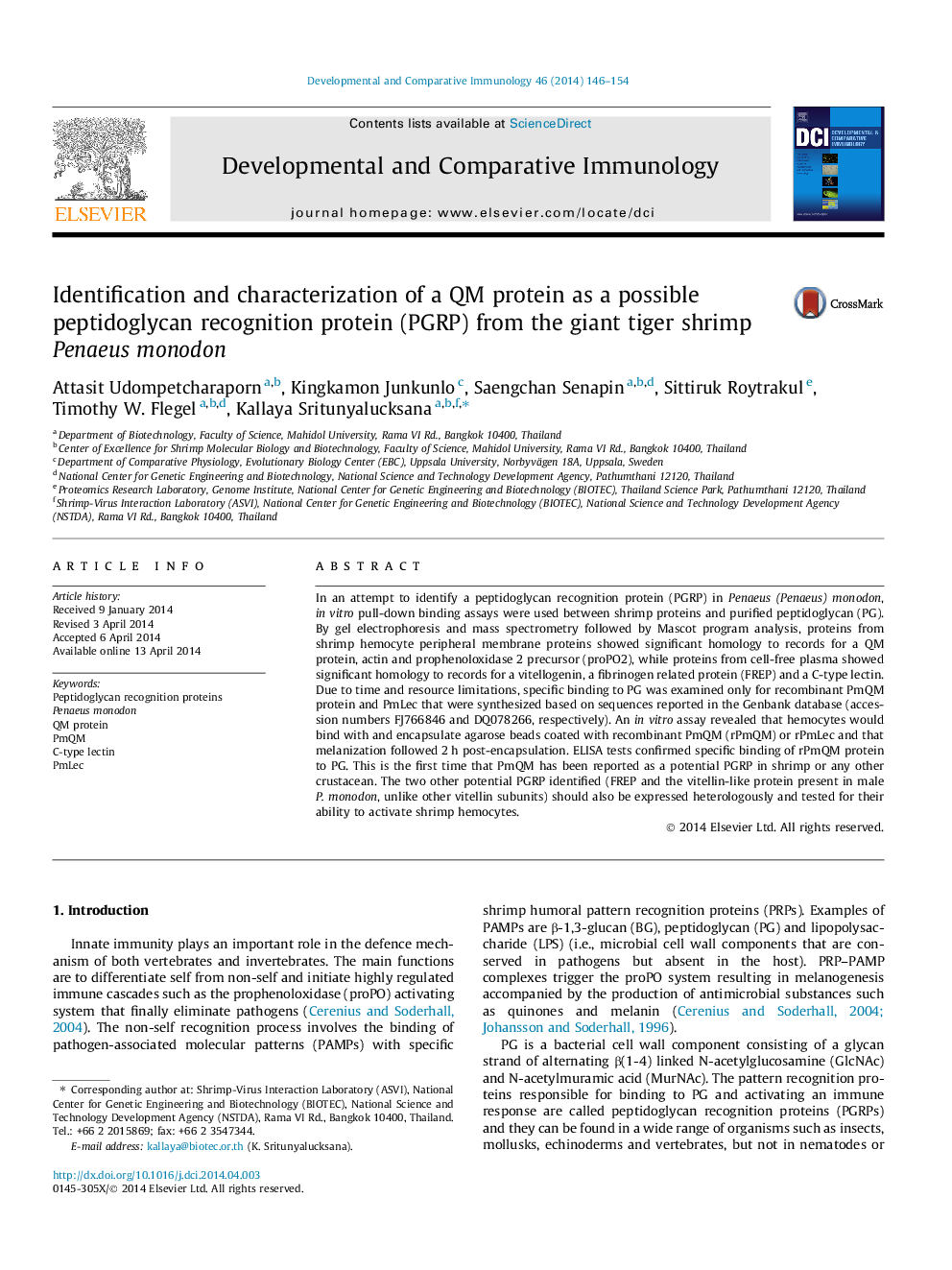| Article ID | Journal | Published Year | Pages | File Type |
|---|---|---|---|---|
| 2429128 | Developmental & Comparative Immunology | 2014 | 9 Pages |
•PmQM from shrimp hemocyte and PmLec from plasma have been identified by in vitro pull-down assay using PG.•Binding of PmQM or PmLec to peptidoglycan can activate hemocyte encapsulation and melanization.•Functional role of PGRP is proposed for PmQM and PmLec.
In an attempt to identify a peptidoglycan recognition protein (PGRP) in Penaeus (Penaeus) monodon, in vitro pull-down binding assays were used between shrimp proteins and purified peptidoglycan (PG). By gel electrophoresis and mass spectrometry followed by Mascot program analysis, proteins from shrimp hemocyte peripheral membrane proteins showed significant homology to records for a QM protein, actin and prophenoloxidase 2 precursor (proPO2), while proteins from cell-free plasma showed significant homology to records for a vitellogenin, a fibrinogen related protein (FREP) and a C-type lectin. Due to time and resource limitations, specific binding to PG was examined only for recombinant PmQM protein and PmLec that were synthesized based on sequences reported in the Genbank database (accession numbers FJ766846 and DQ078266, respectively). An in vitro assay revealed that hemocytes would bind with and encapsulate agarose beads coated with recombinant PmQM (rPmQM) or rPmLec and that melanization followed 2 h post-encapsulation. ELISA tests confirmed specific binding of rPmQM protein to PG. This is the first time that PmQM has been reported as a potential PGRP in shrimp or any other crustacean. The two other potential PGRP identified (FREP and the vitellin-like protein present in male P. monodon, unlike other vitellin subunits) should also be expressed heterologously and tested for their ability to activate shrimp hemocytes.
